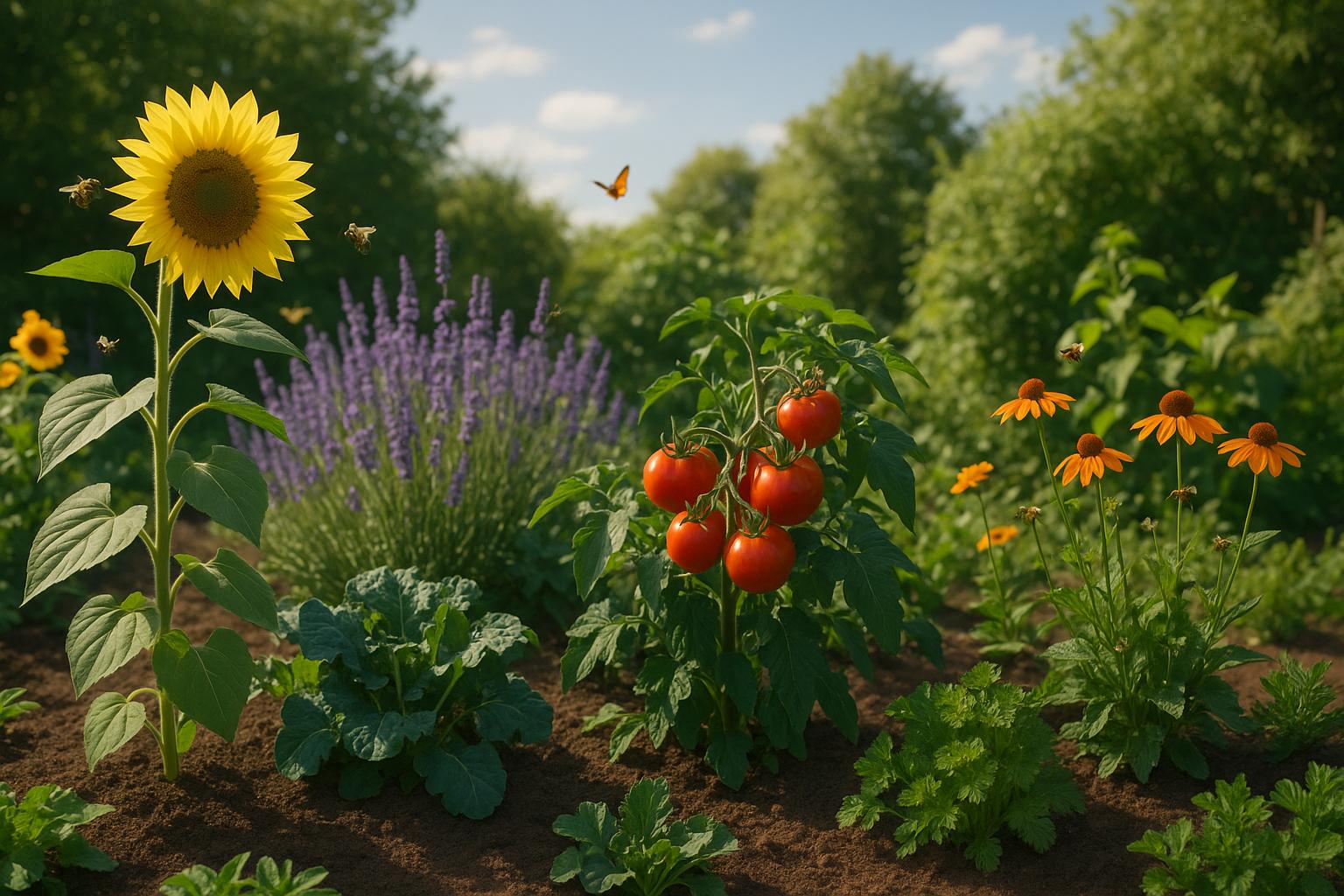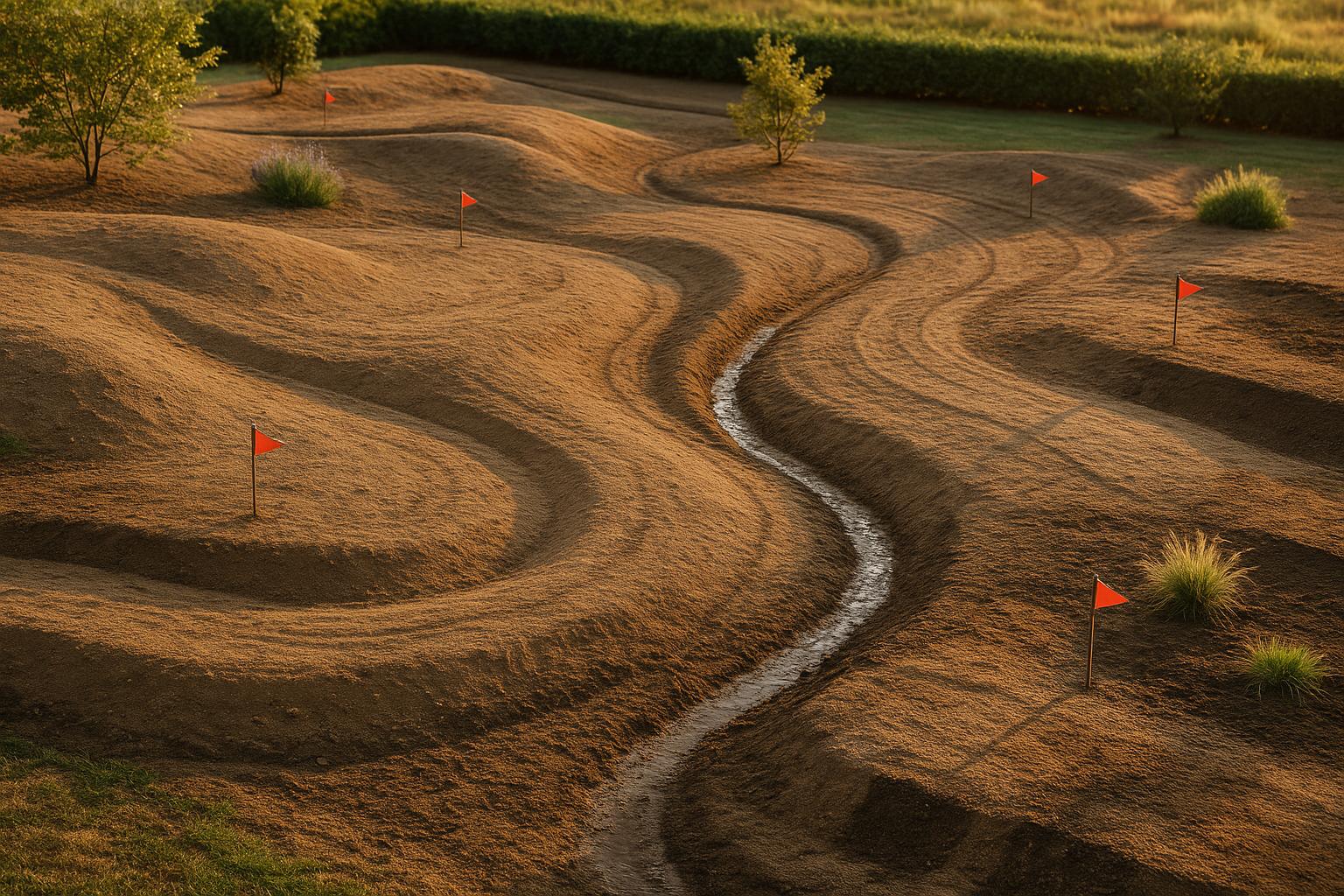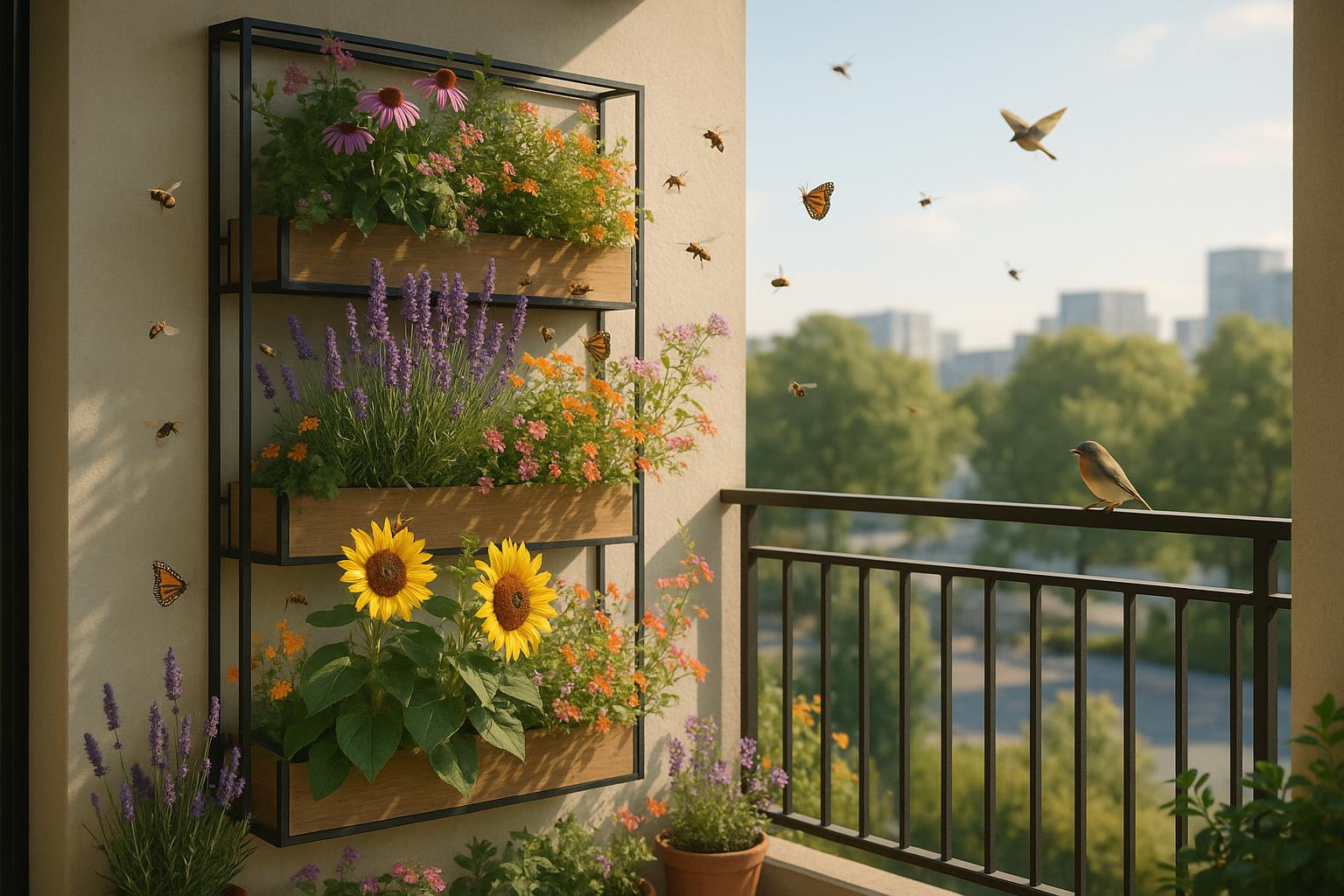Boost your garden's health and yield with this simple 3-year crop rotation plan:
- Year 1: Plant heavy feeders (tomatoes, peppers, eggplants)
- Year 2: Grow moderate feeders (cabbage family)
- Year 3: Use soil builders (peas and beans)
Benefits:
- Controls pests
- Prevents diseases
- Improves soil health
- Increases harvest (up to 29% for corn)
Key tips:
- Make a garden map
- Keep detailed notes
- Rotate plant families yearly
- Don't plant same family in same spot for 3-4 years
Remember: "Crop rotation creates better soil balance and reduces disease and pest issues." - Jack Algiere, Stone Barns Center
Ready to start? Let's dive into the details of each year's planting strategy.
Related video from YouTube
Year 1: Plants That Need Lots of Food
Let's start our 3-year rotation with the hungriest plants in your garden. These heavy feeders will drain your soil's nutrients fast, but they'll reward you with a great harvest.
Growing Nightshade Plants
Nightshades like tomatoes, peppers, and eggplants are the stars here. They're nutrient hogs, using over 25g/m² of nitrogen per growing season.
To get these plants going strong:
- Pick a sunny spot with good drainage
- Add compost or aged manure to your beds
- Mix in slow-release organic fertilizer
- Keep soil pH between 6.5 and 7.0
Tip: Lower pH helps prevent "yellow shoulder" in tomatoes.
Plants That Grow Well Together
Companion planting isn't just garden talk - it works! Here are some good neighbors for your nightshades:
- Basil: Guards tomatoes from pests and might boost flavor
- Marigolds: Confuse insects and attract pollinators
- Asparagus: Helps prevent root problems in tomatoes
Getting Soil Ready
Prepping your soil is key for these hungry plants:
- Test your soil for nutrients and pH
- Add 2 inches of compost in spring
- Mix compost into the top 6 inches of soil
- Try cover crops in the off-season for better soil
"The best harvest starts with providing the best soil for tomatoes." - Paul Maguire, gardening expert
Year 2: Plants That Need Less Food
After a year of growing hungry nightshades, it's time to give your soil a break. In Year 2, we're focusing on plants that don't demand as much from the earth - say hello to the cabbage family.
Growing Cabbage Family Plants
Brassicas, like broccoli, cabbage, kale, and cauliflower, are perfect for this stage. These cool-season crops don't need super-rich soil to thrive. Here's how to get them going:
Start your seeds 6-8 weeks before the first frost, or plant seedlings 4 weeks before. When it comes to spacing, sow cabbage seeds 1/4-inch deep, 24-36 inches apart. If you're planting in rows, keep them 36-44 inches apart.
Even though brassicas aren't as hungry as other plants, they still like good soil. Mix in a light layer of compost before planting to give them a boost.
"Select low-to-bolt varieties for the best flavor." - Gardening Know How
Good Plant Partners
Companion planting isn't just garden gossip - it's a real game-changer for healthier crops. Here are some friends for your brassicas:
Garlic and onions are great buddies. They keep pests away and might even make your brassicas grow better and taste yummier. Herbs like dill, chamomile, and rosemary are also good pals. They confuse pests and bring in helpful insects.
Want to make the most of your space? Plant some root veggies like beets and radishes. They'll help keep weeds under control too.
But here's a tip: keep beans and peas away from your brassicas. They add nitrogen to the soil, which can make your cabbage family plants grow too leafy.
Taking Care of Soil
Keeping your soil happy during Year 2 is key for a healthy garden in the long run. Here's what you can do:
After you've harvested your crops, think about planting some winter rye. It's like a green manure that adds nutrients and helps clean the soil.
Mix up your planting strategy. Combine shallow-rooted brassicas with deeper-rooted plants to use different layers of soil.
To protect your crops from pests, try using floating row covers. If you're into organic pest control, BT thuricide could be your new best friend.
"Soil is a living, breathing organism and requires care." - Author Unknown
Year 3: Plants That Help Soil
After two years of heavy feeders, it's time to give your garden soil a break. Year 3 focuses on plants that boost soil health, setting the stage for your next rotation cycle.
Growing Peas and Beans
Peas and beans are soil health superstars. These legumes have a neat trick: they team up with bacteria in their roots to grab nitrogen from the air.
When you pull up pea and bean plants at season's end, they leave behind a parting gift. All that extra nitrogen stays put, ready to feed next year's crops.
Some top picks:
- Green beans: Beginner-friendly and easy to grow
- Fava beans: Can add up to 250 pounds of nitrogen per acre
- Peas: Get 80% of their nitrogen through fixation
"Legumes have a symbiotic relationship with Rhizobia bacteria on their roots", says garden expert Freyr Trellis. "This partnership is key to improving soil fertility naturally."
To maximize your legume game:
- Inoculate seeds with rhizobium bacteria before planting
- Skip the extra nitrogen fertilizer
- Try a pea and oat cover crop mix - oats keep weeds down while peas work their magic
Using Cover Crops
Think of cover crops as a spa day for your soil. They protect, feed, and rejuvenate the earth when your main crops are on vacation.
Top cover crop picks:
- Winter rye: Tough enough for cold weather with a massive root system
- Crimson clover: Adds nitrogen and puts on a spring flower show
- Hairy vetch: Slow starter but incredibly hardy and nitrogen-fixing
Getting started with cover crops:
- Rake your garden bed smooth
- Spread seeds evenly
- Lightly rake again for good seed-to-soil contact
- Water well and keep moist until germination
Pro tip: Mix legumes (like clover) with non-legumes (like rye) in your cover crop blend for a one-two punch of nitrogen fixation and soil structure improvement.
Making Soil Better
As Year 3 wraps up, prep your soil for the next rotation. Here's how to boost soil health naturally:
1. Turn under cover crops
Do this before they go to seed, usually in late April or early May. It's like giving your soil a nutrient smoothie.
2. Add compost
Mix a 2-inch layer of compost into the top 6 inches of soil.
3. Test and adjust
Fall is perfect for soil testing. Add lime, rock phosphate, or gypsum based on your soil's needs.
4. Plant diversity
The more variety in your garden, the healthier your soil ecosystem becomes.
"Cover crops feed the soil, fostering microbial activity and contributing to overall soil health", says Lisa Hilgenberg, Head Horticulturist at the Chicago Botanic Garden.
sbb-itb-1d926cd
How to Start Rotating Crops
Let's break down crop rotation into simple steps that'll boost your garden's health.
Making Garden Maps
First up: create a garden map. Here's how:
- Grab graph paper or use a digital garden planner
- Sketch your garden beds with dimensions
- Split large areas into smaller units
- Use colors to shade areas by plant families
"The Old Farmer's Almanac suggests using an online Garden Planner for easy crop rotation management. These tools often group plant families and remind you when to rotate."
Keeping Garden Notes
Your garden journal is crucial. Track these:
- Crops planted and their families
- Where you planted each crop
- Planting dates
- Crop performance (yields, pest issues, health)
Ann Stone from Elmwood Stock Farm says: "These are all examples of things we didn't make notes on at the time and later wished we had."
Changing Between Seasons
To rotate effectively:
- Map out your yearly rotation before the growing season
- Move plant families to new areas each year
- Follow heavy feeders with soil builders
- Rotate cool-season crops with warm-season ones
Christine Covino, gardener and author, points out: "Crop rotation has been around for years and is key to healthy garden soil. It's a must for your garden map!"
Here's a golden rule: Don't plant crops from the same family in the same spot more than once every 3-4 years. This breaks pest cycles and balances soil nutrients naturally.
Thrive Lot Garden Services

Crop rotation can be tricky. That's where Thrive Lot comes in.
Thrive Lot is a network of local businesses that specialize in edible and ecological landscaping. They help homeowners set up effective crop rotation and create sustainable gardens.
Here's what Thrive Lot can do for you:
- Design your rotation plan: They'll create a custom 3-year plan for your garden.
- Improve your soil: They'll test your soil, suggest amendments, and help with cover crops.
- Keep your garden on track: They offer regular maintenance to keep your rotation plan going.
- Answer your questions: You can get expert advice whenever you need it.
Thrive Lot's digital design service is pretty cool. They use software to show you what your 3-year rotation plan will look like. It makes the whole process a lot easier to understand.
Now, you might be wondering about cost. It varies depending on what you need, but many people find it's worth it in the long run. Why? Because they end up with better harvests and fewer pest problems.
The best part? Thrive Lot doesn't just do the work for you. They teach you as they go. So you're not just getting a better garden - you're becoming a better gardener.
Summary
Crop rotation isn't just a fancy gardening term - it's a game-changer for your garden's health and output. By moving plants around each year, you're not only growing veggies but also nurturing the soil that feeds them. Here's a quick recap of our 3-year garden crop rotation guide:
Year 1: The Hungry Bunch
Kick things off with heavy feeders like tomatoes, peppers, and eggplants. These nutrient-hungry plants will drain your soil fast, but they'll pay you back with a bumper harvest.
To keep them happy:
- Mix in compost or aged manure
- Aim for a soil pH of 6.5 to 7.0
- Plant them with buddies like basil and marigolds
Year 2: The Middle Ground
Next up, plants that aren't as demanding. The cabbage family (broccoli, kale, cauliflower) fits the bill.
Here's what to do:
- Get them in the ground 4-6 weeks before the first frost
- Add a thin layer of compost before planting
- Team them up with garlic and onions to ward off pests
Year 3: The Soil Builders
Time to give your soil a breather with plants that boost its health. Peas and beans are the MVPs here. They work with bacteria to pull nitrogen from the air, leaving your soil richer.
Don't forget to:
- Coat seeds with rhizobium bacteria before planting
- Hold off on extra nitrogen fertilizer
- Think about using a pea and oat cover crop mix
Jack Algiere from Stone Barns Center sums it up nicely:
"Through crop rotation – mixing up the placement of your favorites each year – you can create better soil balance and reduce disease and pest issues."
By sticking to this 3-year plan, you're not just growing veggies - you're building a healthier, more productive garden ecosystem. Keep your garden map close, jot down notes, and watch your garden thrive year after year.
And here's a fun fact: One study found corn yields jumped 29% with a two-year rotation compared to planting in the same spot. Just imagine what a three-year rotation could do for your garden!
So roll up your sleeves, keep that rotation going, and enjoy the fruits (and veggies) of your labor. Happy gardening!
FAQs
What is a 3 year crop rotation plan?
A 3 year crop rotation plan is a smart way to grow different plant families in a specific order over three years. Here's how it works:
You might start with beans in year 1, switch to tomatoes in year 2, and then grow sweet corn in year 3. After that, you go back to beans. This cycle helps keep your soil healthy, cuts down on pest issues, and naturally balances nutrients.
"A good example of a three-year rotation includes growing beans (year 1), followed by tomatoes (year 2), and sweet corn (year 3) before planting beans in the same spot again the following year", says Lost Coast Plant Therapy.
To make this work, you'll want multiple garden beds. That way, you can grow all your favorite veggies each year while still sticking to the rotation plan.
What is the best crop rotation schedule?
The best crop rotation schedule keeps veggies from the same family out of the same spot for at least 3 to 4 years. If you can stretch it to 5+ years, even better. Why? It:
- Stops soil diseases
- Cuts down on pests
- Keeps soil nutrients balanced
A 3-year rotation is good, but longer can be better. Take the Stone Barns Center for Food and Agriculture - they use a complex 7-year rotation in their fields.
Jack Algiere, Farm Director at Stone Barns, says: "The best way to ensure proper rotation is by having multiple separated garden plots or beds."
So, if you've got the space, consider setting up several garden areas. It'll make crop rotation a breeze and keep your garden thriving year after year.



